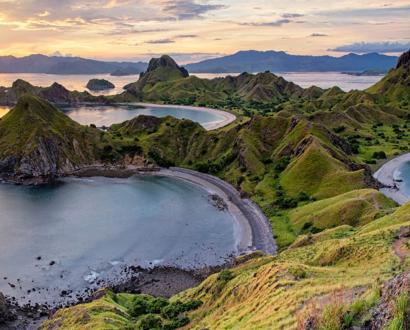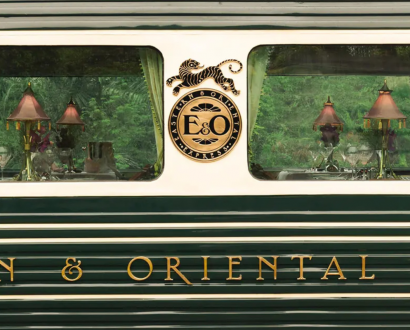Singapore may be the most expensive city in the world (for the fifth year running, according to the Economist Intelligence Unit), but it’s also unlike any other. If you’re looking for a little luxury on your next holiday or find yourself here on business, here’s where to rest your head, tempt your tastebuds, and let your hair down in the Lion City.
Where to stay
The Shangri-La Hotel Singapore
“Would you like another glass of Champagne?” It’s a question they’ll ask you quite regularly when you stay in the Valley Wing of the Shangri-La. You might be enjoying afternoon tea in the lounge, nibbling on evening canapés in the bar, or simply waiting in the lobby for a taxi, but when you’re a guest of this ultra-exclusive section of the hotel, the bubbles are bountiful – and complimentary. What’s more, so are the aforementioned afternoon tea and canapés, as well as breakfast, butler service, and personalised stationery. But even these perks aren’t what makes the Shangri-La so special.
It starts from the moment you pull into the private driveway. A doorman, beautifully dressed in his Tibetan-inspired uniform with towering headgear, greets you as if you’re a visiting dignitary. Ushered inside to a cool lobby that’s both contemporary and regal – with its marble columns and floor-to-ceiling Japanese tapestries – you receive a single orchid on arrival before staff escorts you straight to your room for check-in. It’s easy, elegant, discreet, and luxurious, and you realise – quickly – that this isn’t your ordinary five-star hotel.
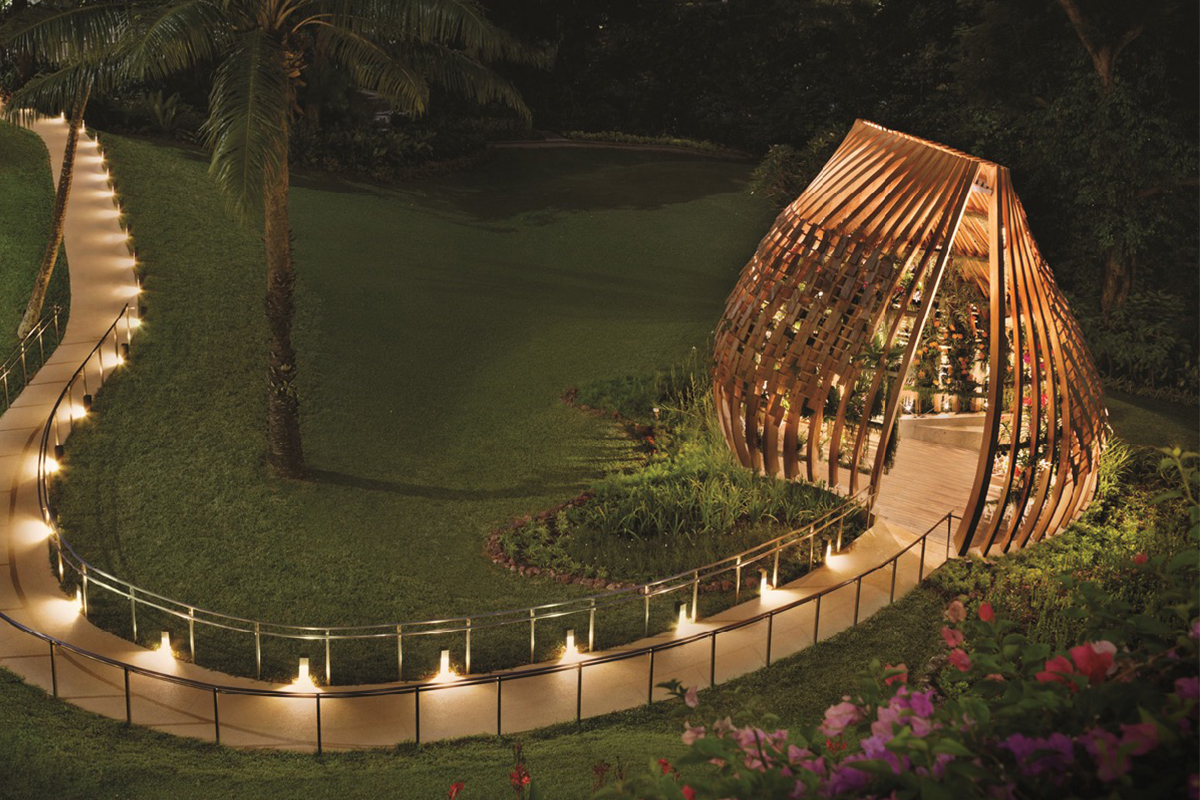
It’s no wonder it’s consistently voted one of the best hotels in the world. Set on six hectares of beautifully manicured gardens with more than 133,000 types of tropical flowers, plants, fruit trees, and Asian herbs, not to mention a seven-metre-tall orchid greenhouse, the Shangri-La’s been dubbed the city’s ‘second’ botanical gardens (after the famed Singapore Botanic Gardens) – with good reason.
It’s elegant, discreet and luxurious, and you quickly realise this isn’t your ordinary five-star hotel.
On an early-morning stroll through the grounds, where you’re likely to come across one of the resident turtles doing the same, you’d be forgiven for thinking you’re in a tropical paradise – not a mere two-kilometre walk or taxi ride from the bustling shopping mecca of Orchard Road. But then, the Shangri-La is full of surprises.
For instance, this is the first Shangri-La ever built. And though it might be the hotel chain’s maiden property, there’s nothing old or stuffy about this 47-year-old beauty. In fact, the hotel’s Tower Wing, which houses 503 of its 792 rooms, received a huge makeover last year, and the result is beautiful.
From three new restaurants to the revitalised club lounge, the Shangri-La has rejuvenated every square inch. But it’s the grand lobby that’s the true showpiece, or rather, the place that houses some incredible showpieces. There’s the magnificent nine-metre-by-six-metre rock wall created by Australian landscape designer Charlie Albone.
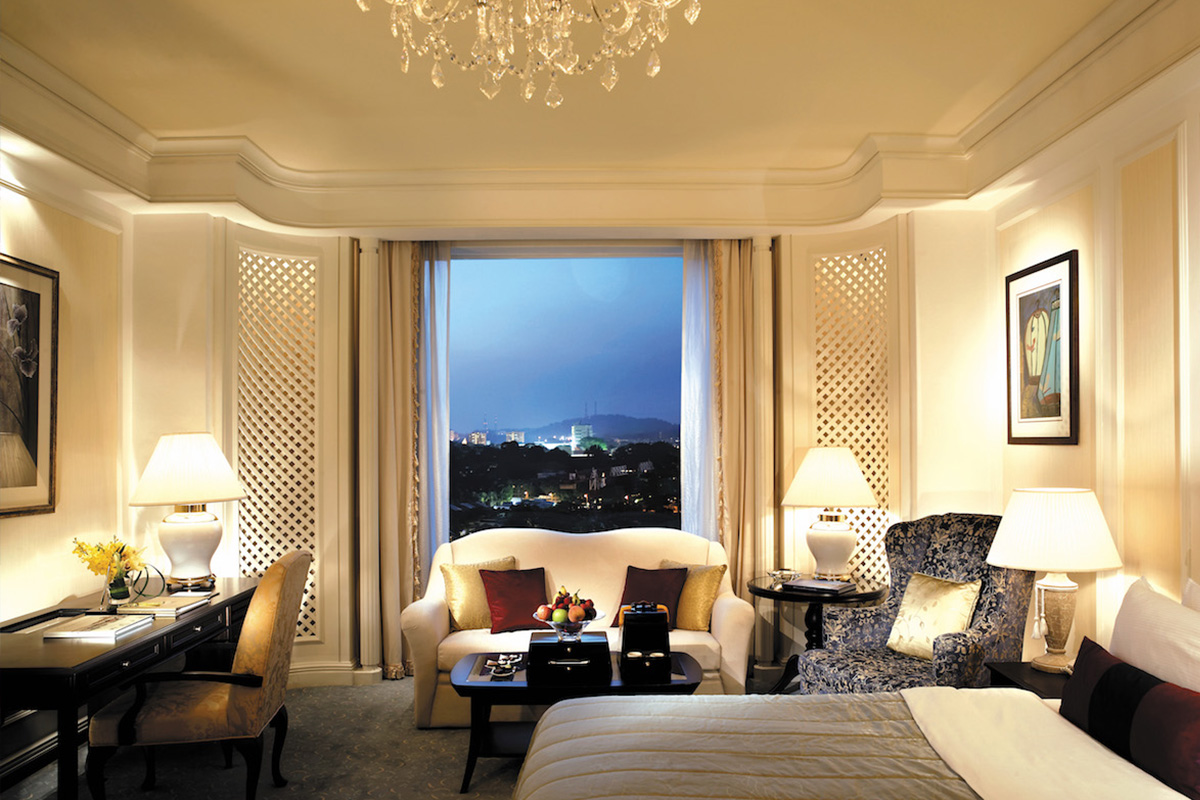
This stunning backdrop, which took 700 hours to install, pays tribute to the element of stone and features lush tropical ferns, potted ficus trees, and 350 kilograms of basalt rock flown in from Australia and installed by a stonemason from Scotland. Then there’s the whimsical sculpture, ‘Children Dabbling in The Water’, by Korean artist Yi Hwan Kwon. Symbolising Singapore’s multicultural society, this
work comprises six sculptures of children thoughtfully placed around the lobby’s central infinity pool. The pièce de résistance, though, is the incredible ceiling installation by Japanese designer Hirotoshi Sawada. Called ‘Tree Canopy’, it’s a shower of thousands of glinting and swaying metallic leaves that pays tribute to the element of wind.
Just as the lobby features artworks from all over the world, the hotel’s many restaurants boast culinary works of art. NAMI offers authentic and traditional Japanese cuisine and includes exquisite dashi-focused set lunches by Chef Shigeo Akiba, a dashi master. At Shang Palace, you’ll find traditional Cantonese cuisine, and Waterfall Ristorante Italiano combines fresh seafood and handmade pastas for classic Southern Italian cuisine.
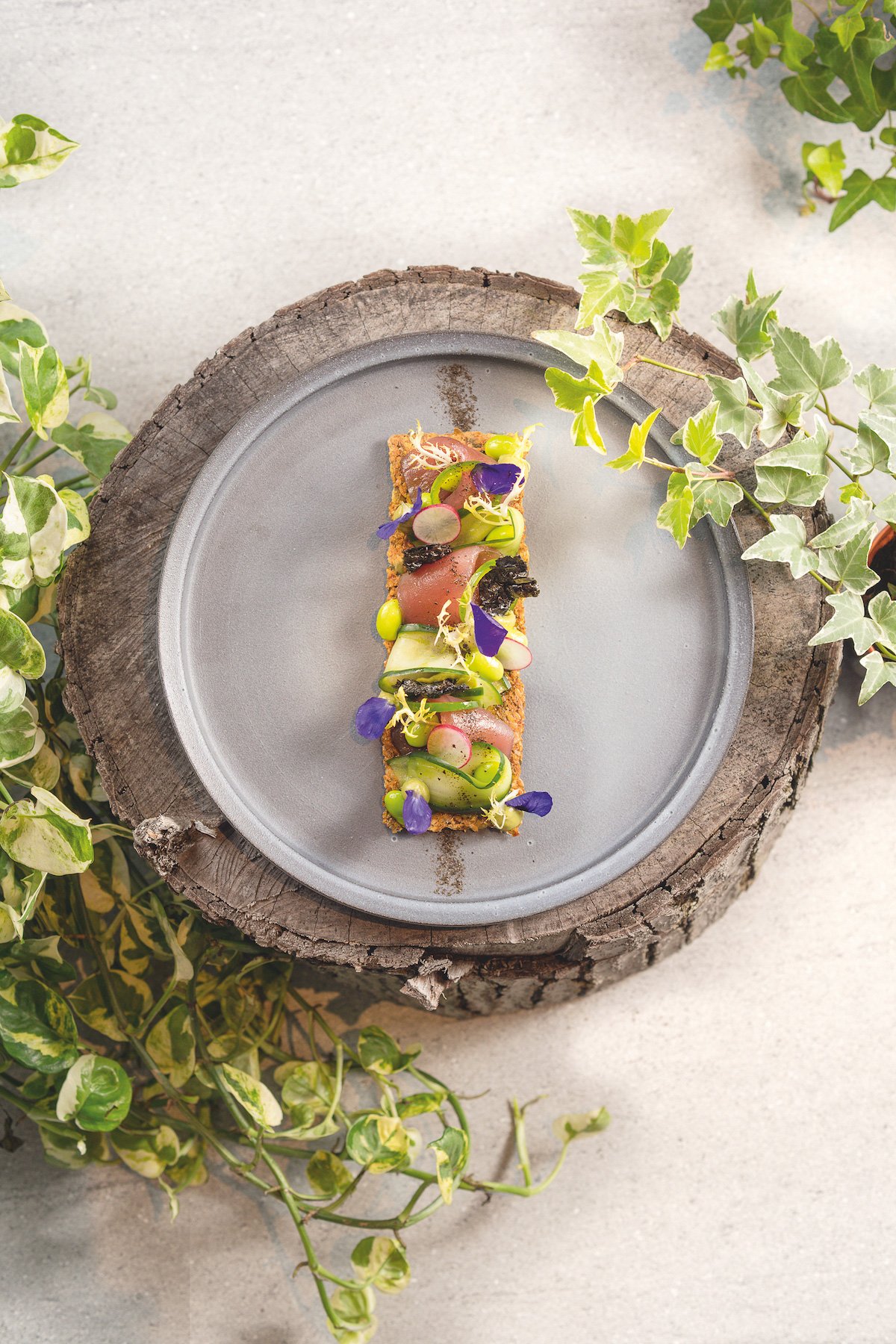
The artist at the helm of Origin Grill & Bar is Sydney-born chef Heidi Flanagan – the woman behind a carefully curated menu that results in an exquisite dining experience. From beautifully fresh raw tuna with avocado and jalapeño cream served on crisp vegetable-and-seed flatbread to the soft, smoky, charred whole lobster with soy, spring onions, ginger, and garlic, each more-ish mouthful is testament to the premium ingredients that she and her team so carefully and cleverly select.
However, it’s Origin’s beef menu, with its bespoke selection of grass- and grain-fed Angus and wagyu cattle, that really sets this restaurant apart. Choose the John Stone (grass-fed, dry-aged 35 days) from Ireland for its exceptional tenderness, or opt for the buttery texture of the Mayura full-blood wagyu (600 days grain-fed) from South Australia’s Limestone Coast.
For something very different – and exclusive to Origin – try the snow-aged full-blood wagyu striploin from Niigata, Japan. The Yukimuro method, which dates back 200 years, uses a traditional snow-covered room to preserve and age the meat, allowing it to develop a particular sweetness and an extremely tender texture. It’s guaranteed to quell even the most carnivorous of cravings.
For those whose yearnings are more sweet than meat, the dessert menu does not disappoint. From the yuzu lemon tart served with a strawberry iced lolly to the brioche donut filled with orange cream, the chefs expertly craft each dish, which make for the perfect way to end an amazing experience that delivers on all levels.
This is also exactly how you could describe the entire stay at the Shangri-La. This gorgeous grande dame of luxury knows exactly what she’s doing, and after decades in the business, she appears to be getting only better with age. Long may she last.
The St. Regis Singapore
For another place to splurge in Singapore, a room at the St. Regis could be just the spot. From its signature butler service – there to satisfy your every whim – to the hotel’s private art collection, which boasts more than 70 pieces worth approximately S$10 million, this is a hotel fit for a king. In fact, Prince Harry stayed here last year, and if it’s good enough for royalty…
Raffles Hotel Singapore
No Singapore hotel list is complete without the queen of luxury abodes – Raffles. With its long list of illustrious guests, including Elizabeth Taylor and Charlie Chaplin, and its rich history as one of South-East Asia’s national treasures, it’s no wonder that people are eagerly anticipating its reopening – due early next year. The renovation will include work on the entire 130-year-old property, except for the white facade because, well, you should never mess with perfection.
Where to eat
It’s an undeniable fact that Singaporeans are obsessed with food. So much so, in fact, that some say eating is the country’s national pastime. Often described as the crossroads of Asia, Singapore’s blend of cultures, marinated over many centuries, has created a culinary landscape like you’ll find nowhere else. With Malaysian, Chinese, Indian, Indonesian, European, and even Middle Eastern cuisines – as well as fusions of this fare – the city really does have something for every taste and every budget.
You could say the same of Adrift by David Myers, the restaurant of the Michelin-starred chef at Singapore’s much-photographed Marina Bay Sands. With its exciting mix of East-meets-West food and tapas-style serves, a meal at Adrift is an extraordinary dining experience, and it starts upon entry.
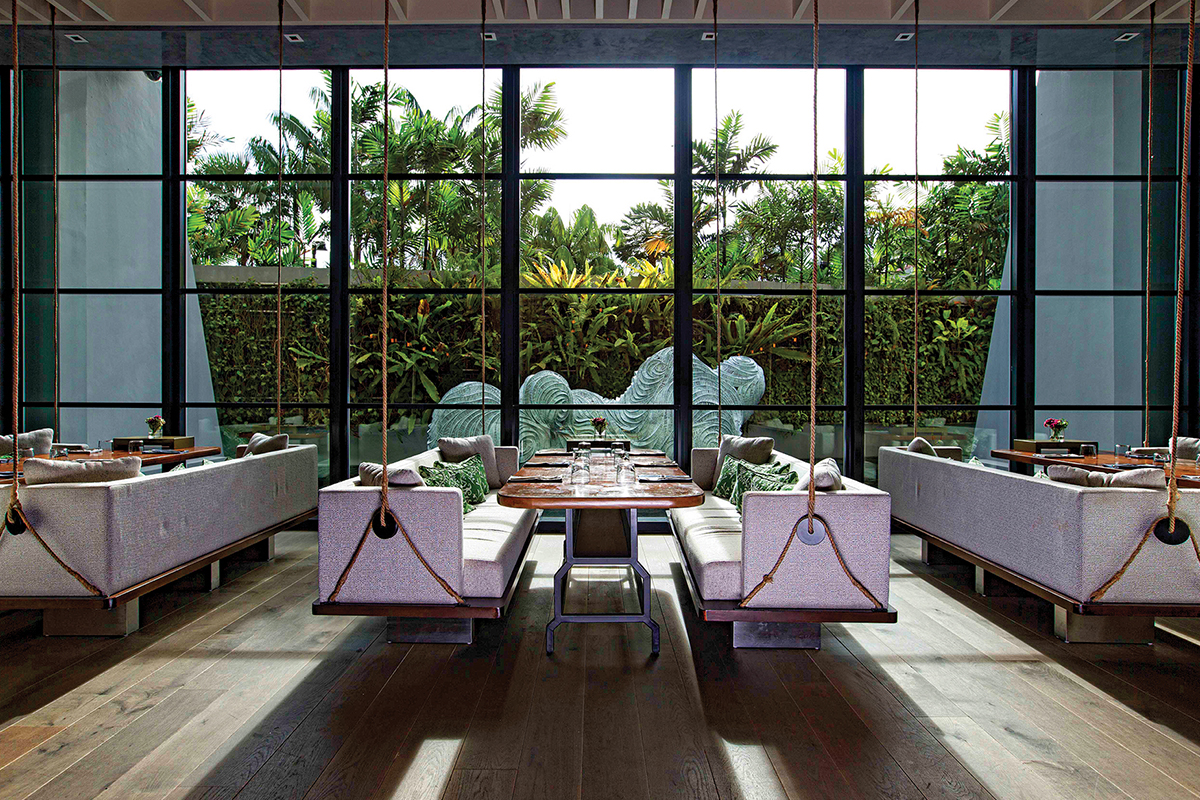
It’s dark, loud, vibrant, and bursting with attitude, much like a nightclub but with substantially better aromas. The 143-seat, 372-square-metre space is a handsome combination of contemporary and antique, with charred-timber accents, industrial pendant lighting, ornate metal screens, and swinging benches suspended from the ceiling – the best seats in the house.
The menu, which the restaurant describes as a ‘modern take on the vibrant izakaya’, is flavour-forward and exciting and reflects Myers’ travels and, in particular, his love of South-East Asian cuisine. “Adrift is for dreamers and explorers,” the celebrity chef says, and the dreamy journey begins with the unexpected arrival of wafer-thin rice crackers served with green onion salt and yuzu kosho aioli to whet the appetite.
The king crab melt follows – chunks of sweet Alaskan crabmeat and pimento cheese sandwiched between thin, crunchy slices of golden-brown bread that taste even better than they sound. There’s also the New England lobster roll » with harissa sauce, potato hash with crème fraîche and caviar, and prawn shumai dumplings with spicy ponzu. These small, delightful, delicious bites are full of flavour and ideal for sharing – though you may not want to.
The larger plates are likewise big treats. The wagyu tobanyaki with smoked bonito and apple ginger soy is sweet, salty, and silky, and the aged duck breast, paired with fragrant plum and cavolo nero (Tuscan kale), is a delight. Add a side of blackened crispy eggplant (think Korean fried chicken but without the chicken) and baby corn over coals, with a lick of shiso butter on top, and this is one whimsical journey you won’t want to end.
Luckily, there’s more to come, with a divine selection of desserts en route. From wood-fired plums with sour cream, lime jelly, and red shisho ice to the yuzu grape with mandarin sherbet, thyme, and kyoho grapes, the choices will excite and delight the palate. But if you have room for only one (poor you!), then order the dragon egg with chocolate mousse, yuzu curd, and soy caramel ice-cream.
If you have room for only one dessert, order the dragon egg.
As theatrical as it is delicious, this dessert virtually insists that you be camera-ready when it arrives at your table. (You’ve been forewarned.) Finish your gastronomic odyssey with ‘the greatest espresso martini of all time’, which might just be the greatest espresso martini of all time – content in the knowledge that although your adventure might be over for now, this is one trip you’d be happy to take again and again.
Odette
Housed in the National Gallery Singapore and run by chef Julien Royer, this French fine-dining establishment has four-, six-, and eight-course menus that change regularly. However, stand-out examples include scallop tartare and the rosemary-smoked organic egg that arrives in grand fashion over billowing dry ice.
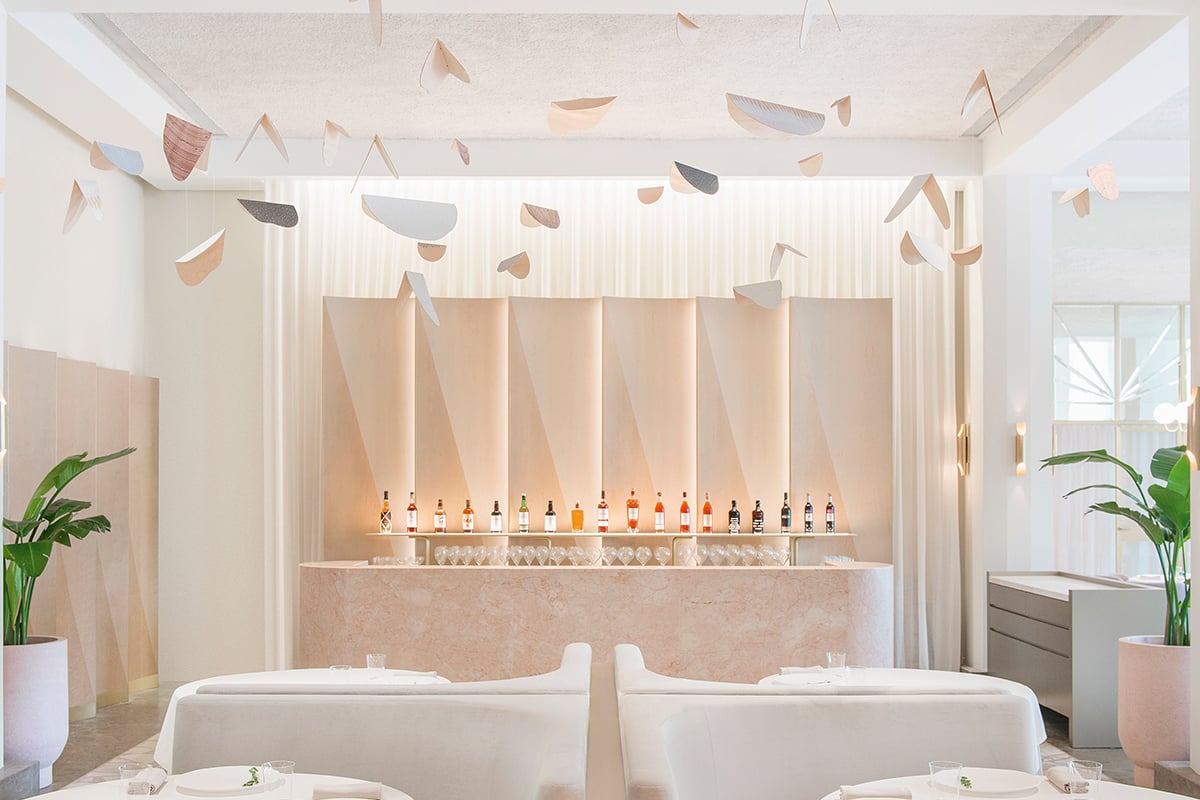
But this restaurant isn’t just smoke and mirrors. Since opening in 2015, it has received two Michelin stars, Restaurant of the Year at the recent G Restaurant Awards, and a spot (number 28) on the 2018 World’s 50 Best Restaurants list.
Burnt Ends
This modern Australian barbecue restaurant just received its first Michelin star – and understandably so. With dishes such as flatiron steak with burnt onion and bone marrow and Western Australian marrons in a kombu beurre blanc, the food is intense, robust, hearty, and satisfying. Make no mistake: this is not your average steakhouse.
What to do
Gardens by the Bay is nothing if not extraordinary. Singapore has taken 18 ‘supertrees’ – each from 25 to 50 metres tall – and distributed them across more than 100 hectares of newly cultivated greenery on reclaimed land. With their huge concrete trunks topped with more than 200 species of tropical flowering orchids, ferns, and climbers, these man-made vertical-garden structures look like a settlement of alien pods, particularly as dusk falls and they begin to twinkle green, blue, pink, and purple to the rhythm of music. Do yourself a favour and don’t miss this architectural, technological, and natural marvel.
Haji Lane in Kampong Glam might be one of the narrowest streets in Singapore, but it’s also one of the best for shopping. Located
in the city’s Arab Quarter, this petite street boasts dozens of quirky and colourful boutiques showcasing independent designers and selling both new products and vintage goods. Don’t miss Bar Stories (cocktail heaven!), Mondays Off (great gifts), and Shop Wonderland (a cafe and lifestyle store that lives up to its name).
The Singapore Flyer is Asia’s largest observation wheel, and this novelty is well worth a trip, particularly at sunset as the sky turns a vibrant pink. The wheel carries you 165 metres off the ground in one of the 28 UV-protected capsules that hold as many as 28 people. Feeling hungry? Try the Singapore Flyer Sky Dining flight, which consists of a four-course dinner served over two 30-minute rotations as well as your very own in-flight butler.




